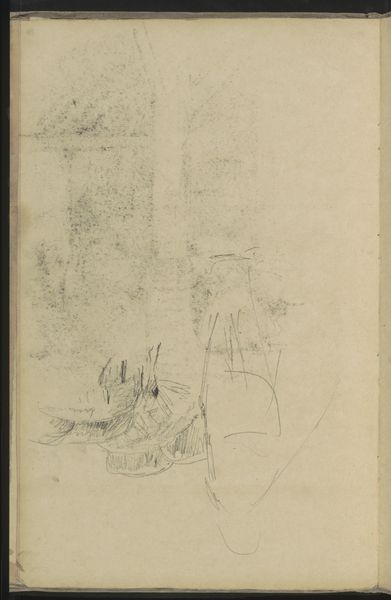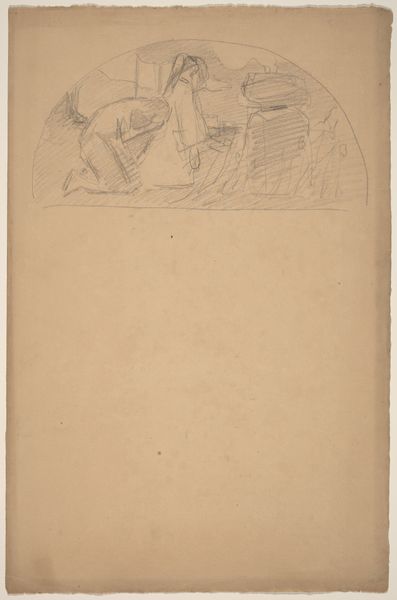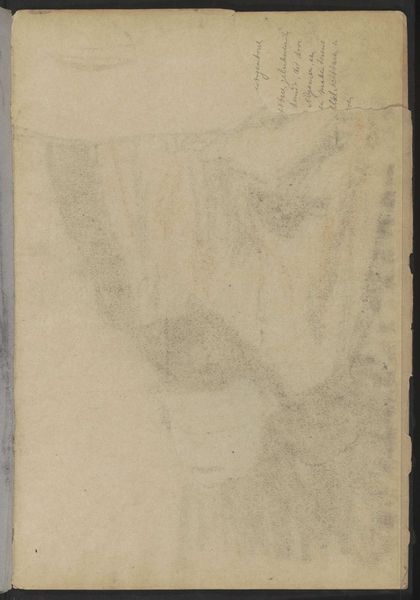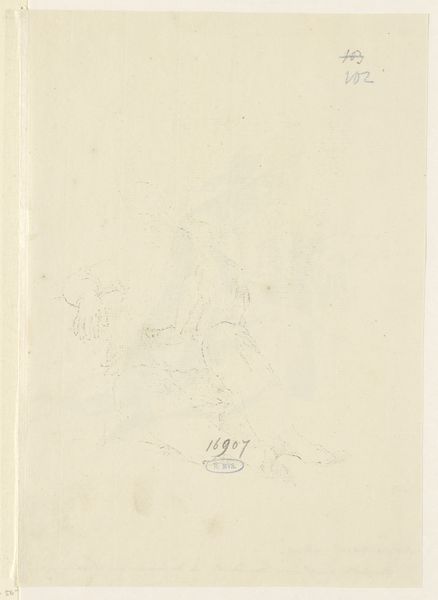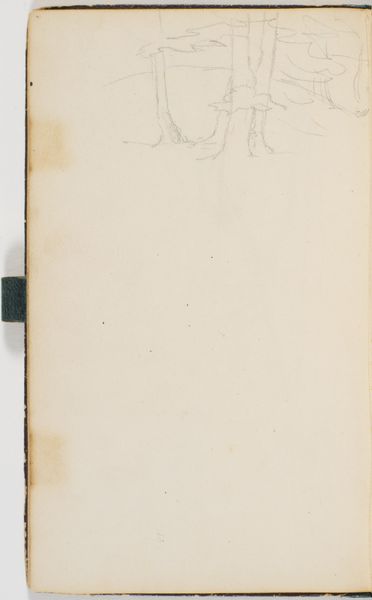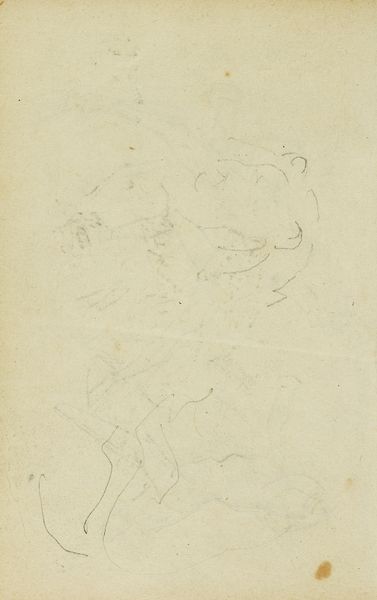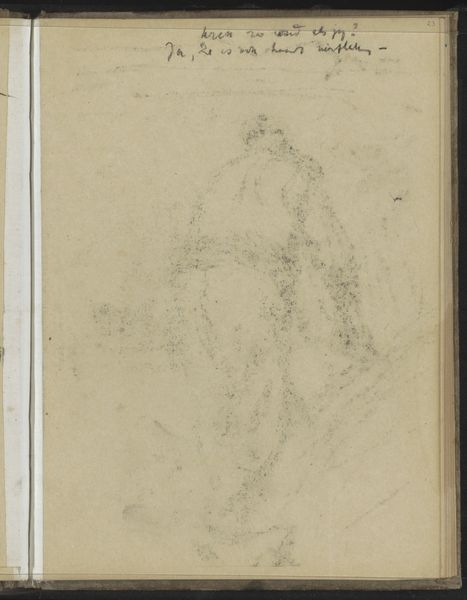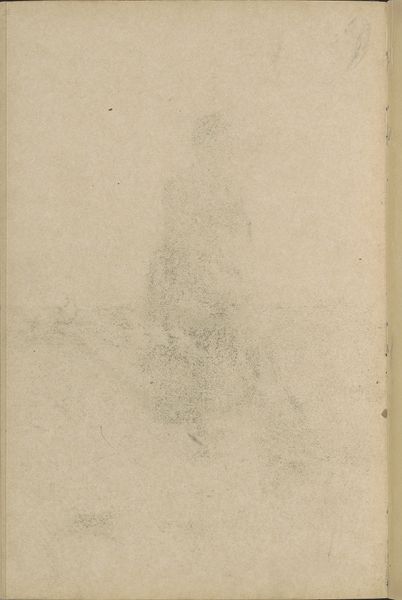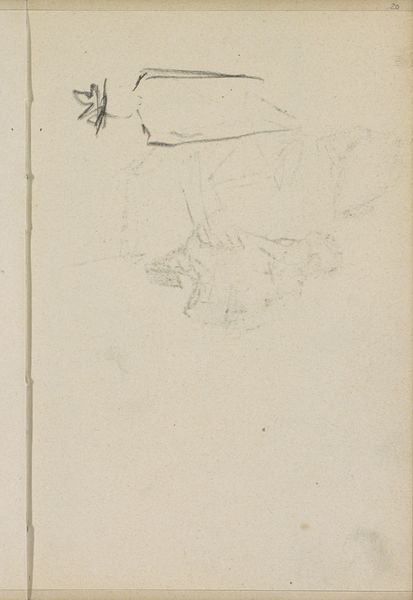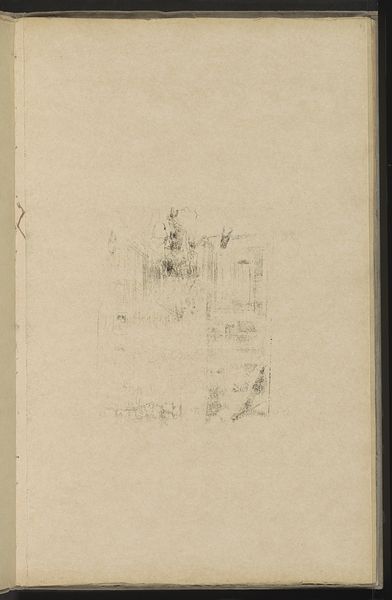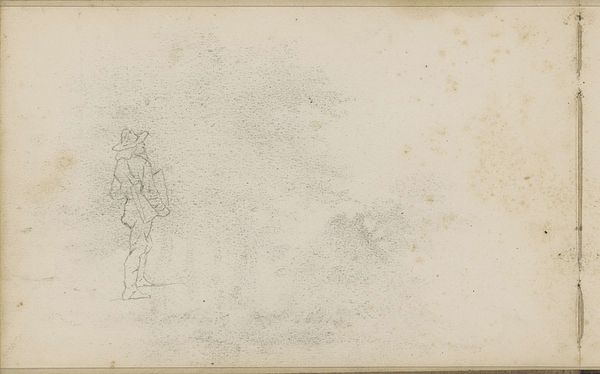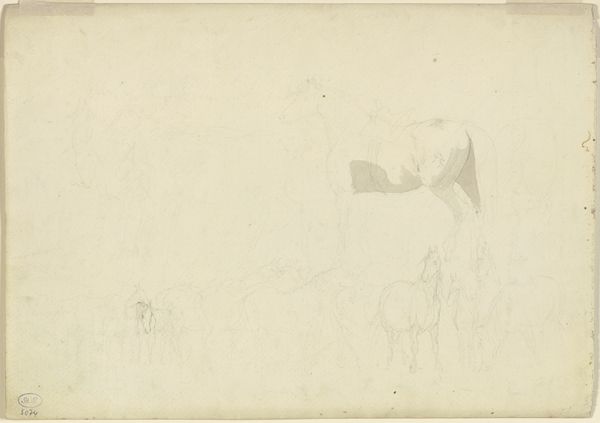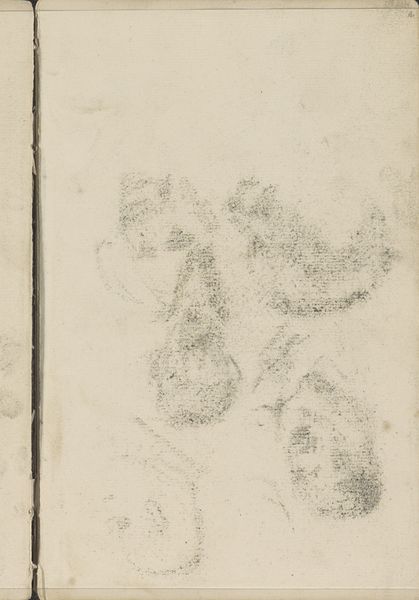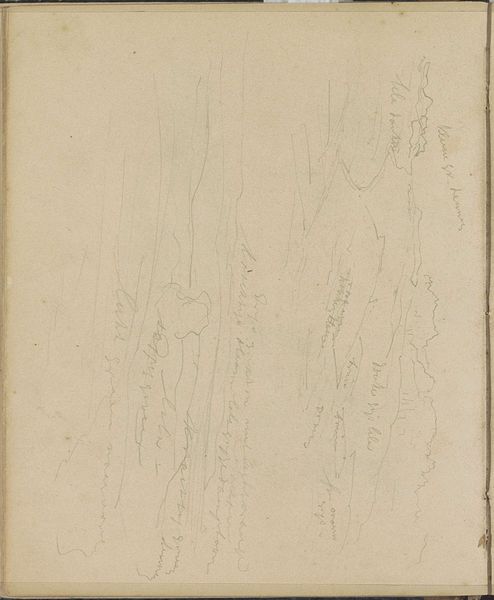
drawing, paper, pencil
#
portrait
#
drawing
#
impressionism
#
pencil sketch
#
figuration
#
paper
#
pencil
#
watercolor
Copyright: Rijks Museum: Open Domain
Editor: This is Willem Witsen’s pencil drawing, "Abklatsch van een krijttekening," created around 1884 to 1887. It feels quite preliminary, like a fleeting impression. I’m curious, what strikes you when you look at this drawing, especially considering the context of the Rijksmuseum and its historical collection? Curator: What strikes me is precisely that sense of immediacy you described. It's interesting to see such an intimate work, seemingly a study or a preparatory sketch, within the walls of a museum known for showcasing finished masterpieces. We often forget that behind grand pronouncements in art history were countless hours of artists working through ideas. How might Witsen's position in Amsterdam's artistic circles have shaped his decision to even create or retain a work like this? Was there a culture of artistic exchange that valued even preliminary works, almost like artistic currency? Editor: That’s a fascinating point. Were there specific artistic circles at that time where artists commonly shared sketches and unfinished works, perhaps influencing each other's processes? Curator: Absolutely. Think about the Pulchri Studio in The Hague. These artist societies were crucial for the development of impressionism and other movements. Artists displayed works in various states of completion, offering feedback and building camaraderie. In what ways did the social dynamics in art societies enable the exploration of diverse art techniques like quick sketches? Editor: So, by viewing the piece as a historical object rooted in that particular time, rather than just assessing its aesthetic merit in isolation, we actually understand the function of art differently, recognizing it's deeply woven into societal structures. Curator: Precisely. It becomes a record of artistic community and dialogue, not simply a testament to individual genius. What have we learned? Editor: This drawing opens a window into the more informal side of artistic creation, showcasing artistic collaboration as well as technique. Curator: And the institution's role to value this practice within the frame of what is considered art, making these exchanges valuable artifacts in themselves.
Comments
No comments
Be the first to comment and join the conversation on the ultimate creative platform.
